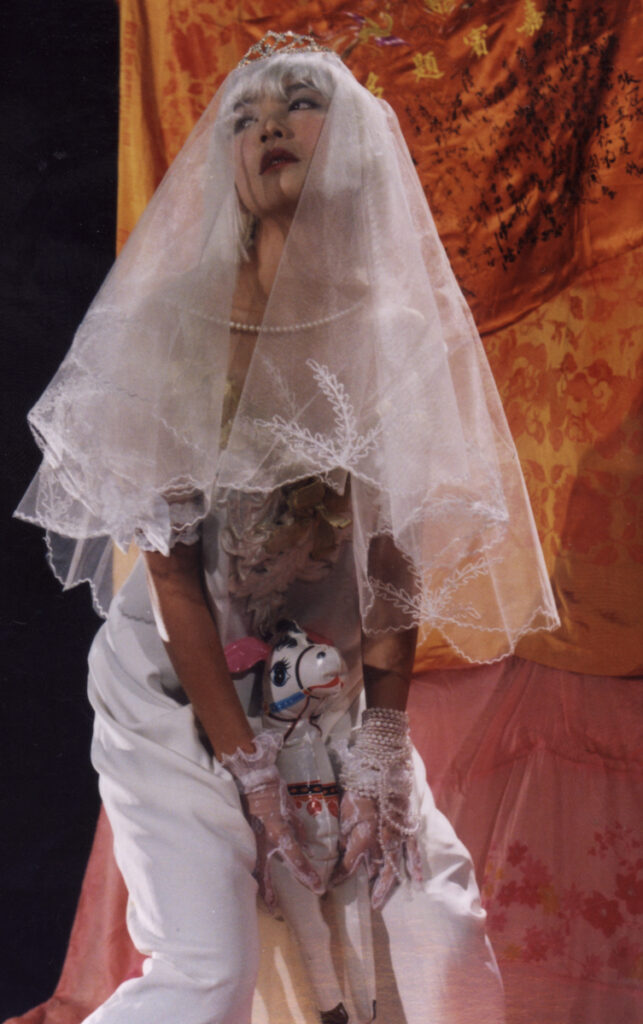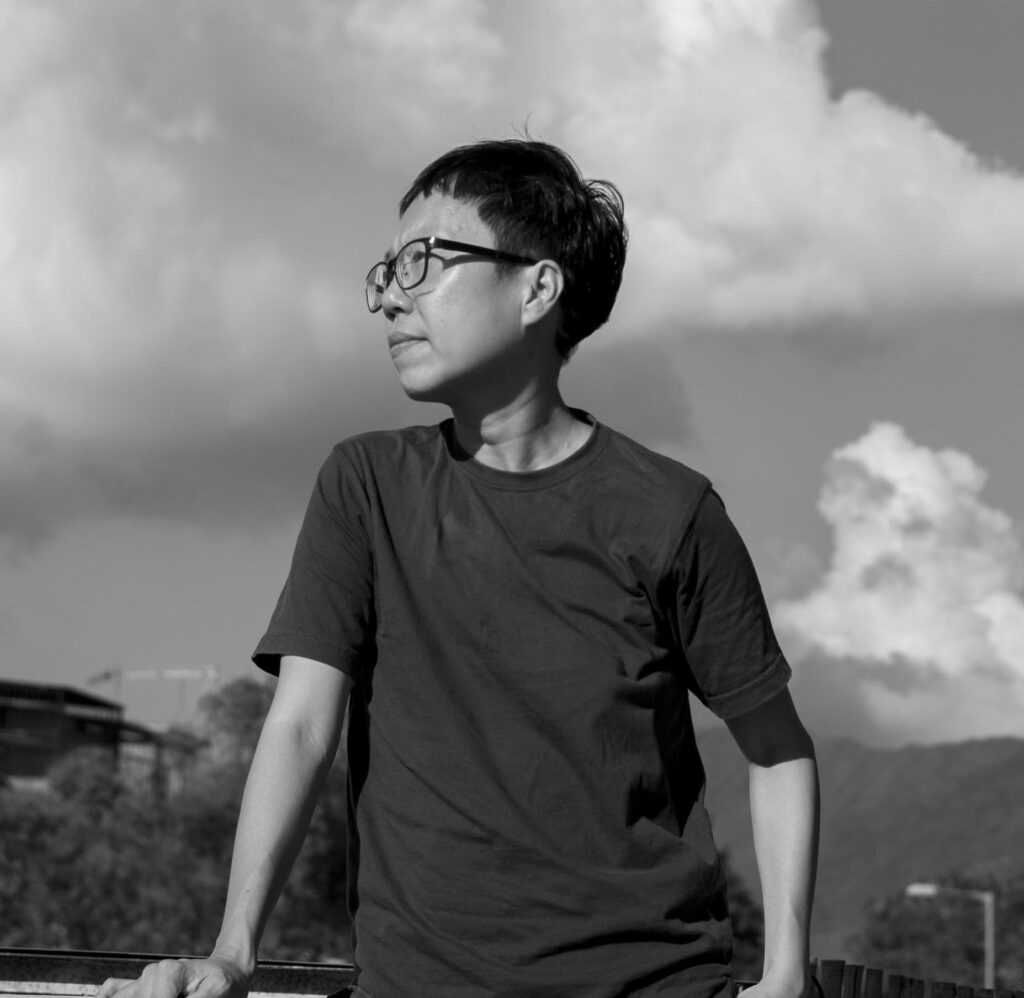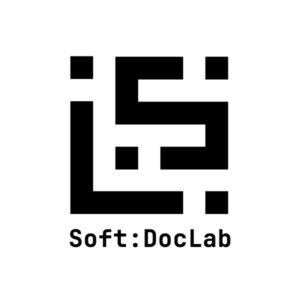
何跨
About Cross
2021.11
游靜 Yau Ching

作家、文化研究學者、電影導演。曾任教於加州大學聖地牙哥校址視覺藝術系、美國密西根大學電影系、香港嶺南大學文化研究系等;現為國立中央大學英文系教授及中研院文哲所訪問學人。專書多種,有詩集《史前紀》(2021)等。電影及錄像作品曾入圍臺灣金馬獎、日本山形國際紀錄片展。
詳見:www.yauching.com
We live in a society that is being rapidly flattened. The higher the expectation of singularity, the desire for purity, and the imaginary fixation, the more we scream for inter——nationalization. The gap between the surface and the inside is stretched to the maximum. The inter——national. The inter- is the border, the interlaced. We have to know the boundary before we can interlace. If the individual is infinitely large and always occupies the center of the nation, s/he cannot see the borders.
我們活在一個被迅速扁平化的社會。愈高度期許單一、渴望純粹、想像固態,口中,愈大叫要國——際化。把表與裡的落差,拉到最大。國——際。際是邊界,之交錯。得先認識邊界,才能交錯。如個體無限大,永遠佔據國的中心,就無法窺見邊界。
Cultures, necessarily hybrid. But how contradicted and how hybrid varies from one culture to another. The places where I grew up, where I studied, where I lived, where my parents grew up, all of these make up the air I breathe, the tissues under my skin, and the selves. How China, how America, how England, how Japan, how Southeast Asia, how the Philippines, how ancient, how modern. Where, when, how contradicted, and how hybrid, form the different versions of me. All education comes from knowing, transforming, this self. Imagine different selves, the synesthesia in between, and their connections.
文化,必然混雜。但如何矛盾,又如何混雜,則每處不同。成長的地方,讀書的地方,生活的地方,父母成長的地方,所有這些,組成呼吸的空氣,組成皮下組織,組成我。如何中國,如何美國,如何英國,如何日本,如何東南亞,如何菲律賓,如何古代,如何現代。何地,何時,何矛盾,何混雜,形成不同我。所有的教育,來自認識,轉化,這個我。想像不同的我,之間的共感,與連線。
To do yoga, I have to take off my glasses. Standing in front of the mirror, the silhouette has a head but you can’t see the face. The human form and borders of space blur in the encircling air. Ever used smudge in Photoshop? Its icon is a curved finger. Where the mouse slides over, a line or an edge, between A and B, between you and me and it, the border can be blurred. Semi-fluid, powder-like, the I dissolves in the air——water surrounding. Blurred, one becomes softer, freed from the routinely defined, bordered self, imagining weightlessness, closer to pain, encircling the void, closer to, me.
做瑜伽,我得脫掉眼鏡。站在鏡子前,輪廓有頭但看不見臉,人形與空間的邊際,糊在周圍的空氣中。有用過Photoshop的smudge嗎?圖標是一只彎曲的手指。鼠標滑過處,線或邊,甲與乙之間,你與我與它之間,邊界不明。我,如半流質,如粉末,溶於環抱的空——水中。邊界不明,讓我更柔軟, 脫離被日常界定、框限的我,想像無重,接近痛,環抱空,更接近,我。
From 1999 to 2005, I taught at the School of Design of Hong Kong Polytechnic University. A cross-media, cross-disciplinary and cross-cultural curriculum is a must. Originally known for its fashion design and interior design disciplines, there were faculty members from over a dozen countries. After compulsory crossovers, the three-year fashion design curriculum was split and scattered in all courses, each taught by teachers from different disciplines and nationalities. If lucky enough, we might get to some understanding upon the end of each semester, while more often than not, there was not enough time or patience to hear each other. After all, we were there to teach, not to study for another design degree. The students were, of course, already a handful.
1999-2005年間,我在香港理工大學設計學院任教。學校每年開課都要求跨媒體、跨領域、跨文化。這所學校本來以時裝設計與室內設計主修聞名,教員來自十幾個國家。跨了以後,三年的時裝設計課程化成每門課中的一小撮,每門課都由來自不同專長、不同國籍的老師合教,運氣好的話,大家聽得懂對方的時候,就是下課的時候。更多的時候是,不夠時間或耐性聽見。這也難怪,大家是來教書的,不是來再讀一個設計學位。處理學生,已經弄得,一手都是。
Every specialism then became a water drop in class, flowing through without leaving any trace. Like on a non-stick pan, fast and clean. Nobody was responsible for anything. The students stood by the doorway. Inside was a circus. They took a peep at everything without seeing anything. Never leaving, never arriving anywhere, never experiencing change, never going under, their own skin. If there is nothing beneath one’s feet, how can one ever transgress, anywhere?
課上,每個專長都是一點水,水過不留痕。不沾鍋,快又乾淨,沒人負責最好。學生永遠在門邊,裡面眼花瞭亂,甚麼都瞄過一下,甚麼都沒看清。沒離開,莫論到達任何地方,沒經歷任何轉變,沒走進自己的,皮下面。腳下全空,跨——從何談起?
Most people, most of the time, can’t afford, crossing. What a pain to cross out of one’s own skin. In 2002, I made a feature film called Ho Yuk (Let’s Love Hong Kong). The Chinese language itself is intercultural. Many people around the world live every day between the spoken dialect and the written language; between the ancient phonology and languages that have been passed down for thousands of years, such as Cantonese, and between the modern national languages that were invented only about a hundred years ago. There are dialogues in Chinese, Cantonese, and English in “Let’s Love Hong Kong”. At the Golden Horse Awards evening banquet, a Korean curator who was a member of the jury came to me and said, Let’s Love Hong Kong was too sophisticated, had too much stuff in it. I was very happy to hear such criticism. Where crossing fails is probably also where it works. Of course, too much stuff is not necessarily good. Feelings, mixed perhaps too much, perhaps mixed in wrong ways. Then, crossing, not to mention intersecting, becomes impossible. Then, next time we have to learn to cross, a bit more.
大部分人,大部分時候,無法承受,跨。翻出自己的皮,多痛。2002年,我拍了一部劇情長片,叫《好郁》,不是《好鬱》。中文本身是跨文化語言。世界上很多人,每天活在,口中的方言,與筆下的書面語之間;在當下流傳幾千年的古音古語如粵語,與大概一百年前才發明出來的,現代國家語言之間。《好郁》裡頭有國語、粵語、英語對白。金馬獎典禮晚宴,評審團成員之一的韓國策展人過來跟我說,《好郁》,太複雜了,放太多東西了。我很高興聽到這樣的批評。跨文化看似失敗的時候,大概也算是,一種成功。當然,東西太多不一定是好,五味紛陳,也許沒混對,莫論踏出。莫論交錯。下次得,學習,更跨,一些。
